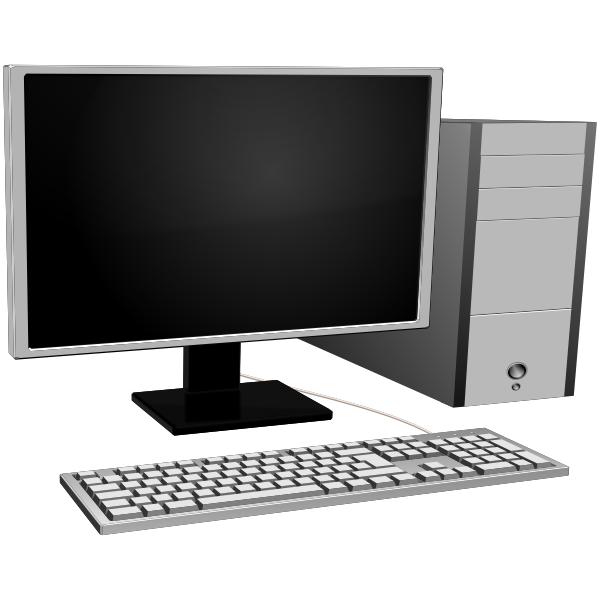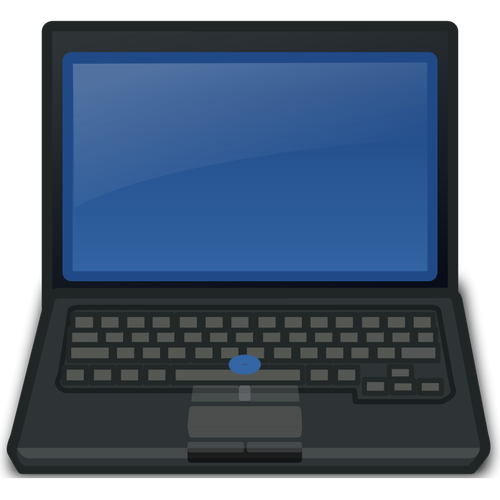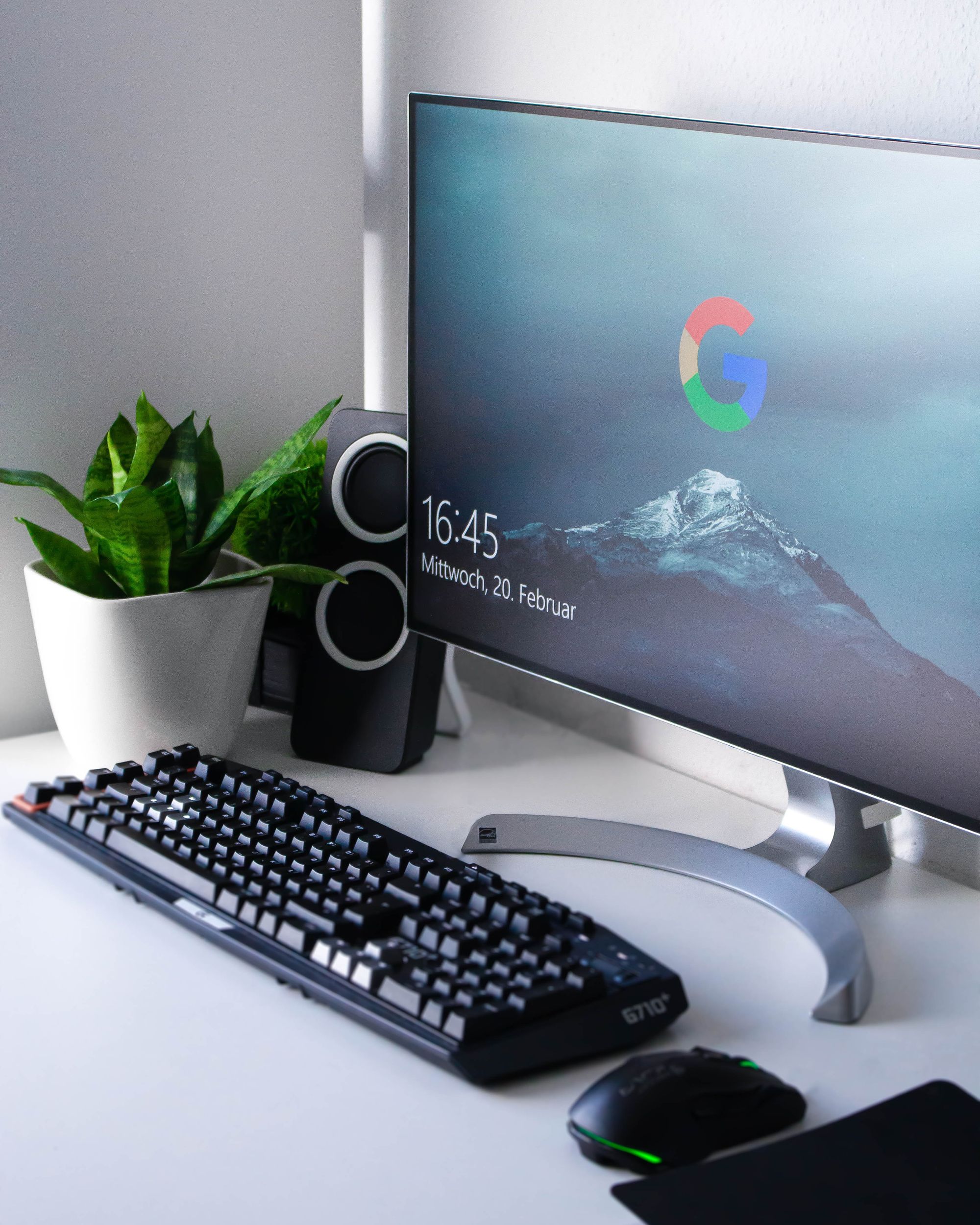Computers have revolutionized our lives.
They help us get repetitive tasks done quickly and accurately. And they are tireless and do not fear complexity.
Computers are able to process data and perform operations at a rate of millions per second. They can get a task done much faster compared to the time it would a human to complete the same task.
Having access to a personal computer also gives you the opportunity to use the plethora of information and free resources available on the web. This in turn can help you learn new skills and possibly improve your quality and standard of life.
But what are computers, exactly – and more specifically what is a PC?
In this article you'll learn the basics of computers: what they are, the different kinds of computers available, and how they work.
What is a computer? A definition for beginners
Most of us use computers everyday.
You can use them for work – when you want to edit a word document, attend a video conference, or send an important e-mail.
You an also use them for entertainment purposes – such as browsing through social media or playing a video game.
And now more than ever, many people use computers to consume educational content and gain new skills.
They are so popular in our day to day lives, but do we ever stop to think what they actually are? Or how they work to accomplish various tasks at high speeds? Or what parts they're made of?
A computer is a tool that accepts some input and can then easily manipulate and process the different kinds of data it receives. It performs complex calculations and produces some output. That output can also be stored for later retrieval and use.
Specifically, a computer is an electronic device, or machine, that follows certain specified rules and completes a standard set of functions such as:
- Creating information
- Taking data as input from an external resource
- Processing the data into something useful
- Storing all kinds of information and instructions into memory and retrieving them when required or requested
- Generating some kind of output
When we're trying to define what a computer is and how it works, we often use the analogy of a human brain.
We can think of our brains more advanced and sophisticated computers. And they are actually cabable of much more and are far more complex than computers.
But human mental processing and the way we handle information is kind of similar to how computers do it. Our brains also receive input, transmit information, and produce output based on the input they receive.
How Computers Function
Every computer is comprised of both hardware and software.
Hardware is all the physical parts that a computer is built from and is what makes a computer a computer.
Hardware are the physical components you can touch, and they are located on both the outside and the inside of a computer.
These are also the parts that perform all the operations and execute instructions.
Software is made up of all the digital parts – the components you cannot see or touch in a computer.
Software are collections of programs that tell the hardware components what to do and how to behave. They give the hardware the instructions it needs to execute in order to get things done.
Programs are a set of instructions in the form of 0s and 1s (or binary code). They are commands that need to be executed in sequential, logical order.
The basic hardware and software of a computer
Some of the hardware components you can find on the outside of a computer are:
- The computer case, also known as the tower, which contains the important hardware pieces that are found on the inside of a computer. This external physical part stores the internal circuits and digital structures of a computer.
- Output devices such as:
- A monitor, which is a screen, used for displaying and outputting visual information.
- A set of speakers, which translate digital signals to sound.
- A printer, which outputs information on pieces of paper.
- Input devices such as:
- A keyboard used for typing text and characters – essentially for entering any written information.
- A mouse for clicking, pointing, and selecting approriate data.
- A microphone.
Some of the most important internal pieces of hardware are mentioned below:
- The motherboard. It's the main circuit board which connects all the important hardware components together.
- The CPU (short for Central Processing Unit). Every computer has a CPU. It is also known as a processor and is often referred to as the 'brain' of a computer, since it processes large amounts of information at a high speed. It carries out arithmetic and logical functions.
- The GPU (short for Graphics Processing Unit). It renders and manipulates images, graphics, videos, and all kinds of visual data.
- RAM ( short for Random Access Memory), or the main memory. It's a volatile, short-term type of memory that only stores information temporarily while a computer is powered by electricity. It is used when you open and are using an application or file. When the power turns off, any files you created or updates you made and didn't save will be lost and are hard to retrieve.
- HDD (short for Hard Disk Drive) and SSD (short for Solid State Drive), are storage devices and are non-volatile. This means that they store and save data permanently, even when the computer is shut down and there is no power supply.
- A power supply unit. All components require electricity in order to operate and function correctly. The power supply connects to some type of power source, whether it's a power outlet or a battery.
Some important software components are packages that contain programs for word and number processing and giving presentations such as the Microsoft Office Suite.
Other examples of software are e-mail programs such as Google's Gmail, web browsers such as Google Chrome, Mozilla Firefox and Apple Safari, and productivity/note-taking tools such as the Notion app, to name a few.
The most important piece of software for computers, however, is the operating system.
It controls all functions on a computer and manages both the hardware and software components.
It's the interface between software and hardware – the way that those two communicate with one another and the way you interact with a computer.
The most popular operating systems commonly used today are Microsoft's Windows OS and Apple OS. Linux is also a very popular operating system among developers.
Different Types of Computers
The hardware and software components mentioned above are universal to all computers.
Even so, there are a variety of different types of computers.
Nowadays there are so many devices available – and each one has different sizes, use cases, power cabailities, and portability.
There are smartphones, smart watches, smart TVs, smart cars, smart electrical appliances, ATMs, and powerful, high performance web servers.
Those are just some examples of devices that have a built in chip, or CPU, which makes them a computer.
One of the most popular and common types of computers, however is the PC. PC is just an abbreviation for Personal Computer.
What is a PC?
A Personal Computer is a small multi-purpose computing device that contains a CPU (a processor).
It's designed in such a way that it's intended for individual use only – one person at a time.
I'm emphasizing the single-use nature of PCs, as it's in contrast to massive mainframe computers, which were widely used in the earlier days of computing.
A mainframe is a very large and powerful supercomputer, capable of taking up an entire room. Multiple people, even up to hundreds of them, can access and use it at a given moment.
WE use PCs in offices and homes, and each office and home can have multiple personal computers depending on how many people are working/living there.
There are different styles of PCs, and they can run on different Operating Systems.
The most popular type of PC uses the Windows OS.
The two types of PCs
PCs come in two main categories, depending on their size and how you use them.
There are stationary or desktop computers, and portable or laptop computers.
Stationary PCs are desktop computers. They are relatively large in size and stay in one set place. You might have it in your home office, or in your office at work.
Desktop computers have their internal hardware enclosed in a case (or tower), as mentioned earlier on. They have a separate monitor, keyboard, mouse, and set of speakers.
The stationary PC is the type of PC that people typically think of when referring to the term 'PC'.

The second category of PCs are the portable ones, such as laptops, tablets, and smartphones.
They are smaller in size, much lighter, and all their important parts come built in – the case, keyboard, and monitor are not separate from each other – rather they are all enclosed in the device.

When would you use a desktop vs a portable PC?
Stationary, or desktop, computers are usually very fast and powerful. And they typically have higher performance and better functionality than portable PCs.
In addition, desktops typically cost less and they're cheaper to upgrade.
Users may prefer a desktop computer because they are relatively flexible and versatile. This means you can customise them to best fit and suit your individual needs and tastes.
Desktops are used mostly in enterpise computing and you can do any kind of work using one. They're the computer of choice when you're working from home of from an office, since you can't move them easily.
Desktops are also a popular choice for gaming, as well as for using graphic design and video editing software. This is because they have higher processing power and capabilities which result in higher quality graphics. There is more space available on the screen while working, thanks to the separate monitor.
On the other hand, portable PCs or laptops are the computer of choice for users who often work 'on the go' or are digital nomads.
They are helpful when you want to work while traveling or when you simply want to work from a coffee shop for a day.
Laptops and other portable PCs are also a good choice for students, who can take their work from one class to another.
Laptops typically have a higher price tag both initially and when you want to upgrade them. They're also a bit harder to customise. But their main selling point is definitly their portability.
You can do the same work on a laptop as you would on a desktop computer, such as edit documents and spreadsheets, play games, edit videos, create compelling graphics, and use a variety of software. Just keep in mind that their power is significantly less than that of a desktop computer.
Conclusion
Thanks for reading and making it to the end of the article!
We went over the definition of a computer, the different types of computers, and the parts all computers have in common.
At the end, you learned the basics of Personal Computers – the most popular computers today.

